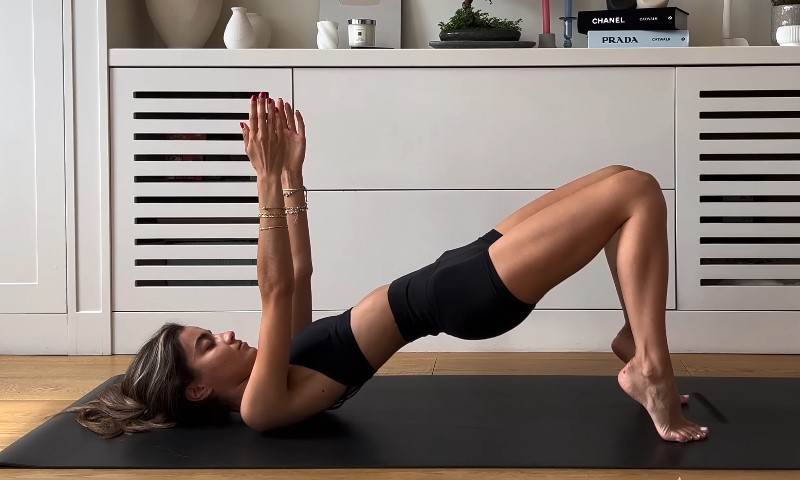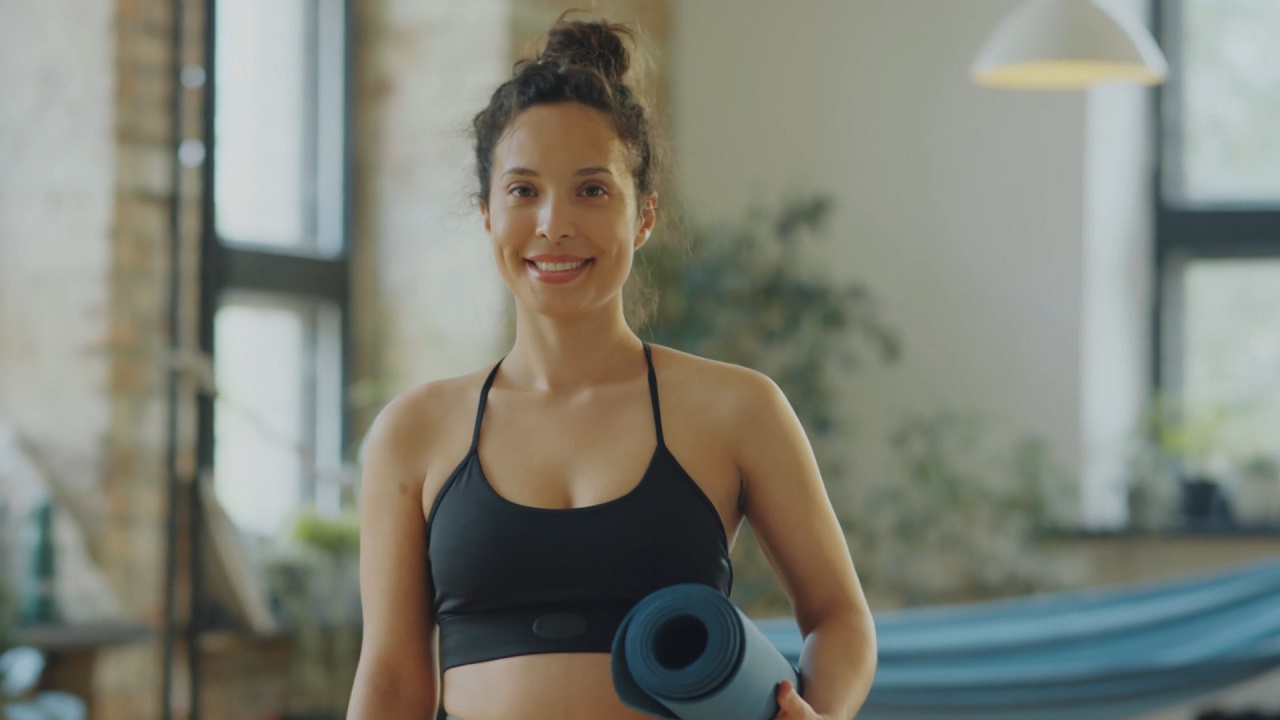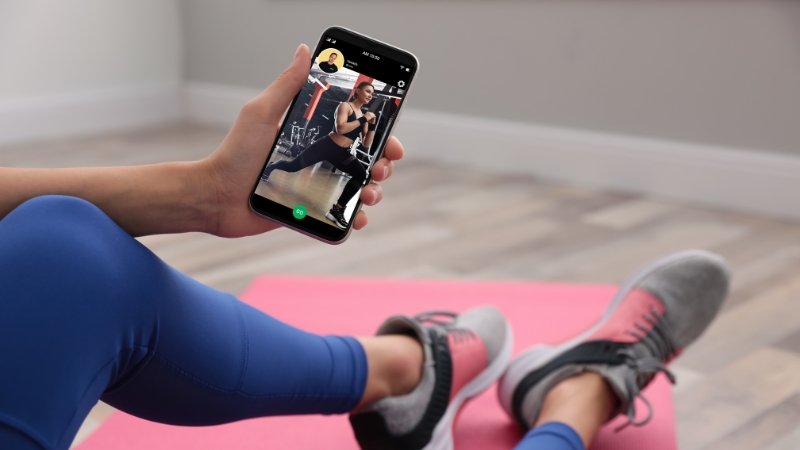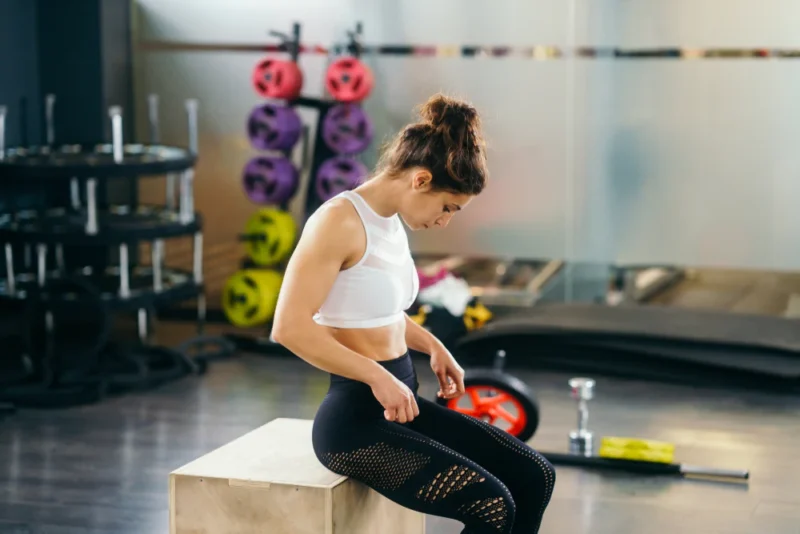
Share Post:
A box squat is a squat variation where you squat down to a box or bench, pause, and then stand back up. The key difference from a regular squat is that the box serves as a guide to ensure you’re hitting the same depth every time.
It also forces you to sit back more, engaging your posterior chain—think glutes and hamstrings—while reducing the strain on your knees. Mastering the box squat can help you build strength, improve technique, and boost your confidence under the bar. Today, I’ll give you all the necessary info to perform this exercise perfectly.
Table of Contents
ToggleChoosing the Right Box Height
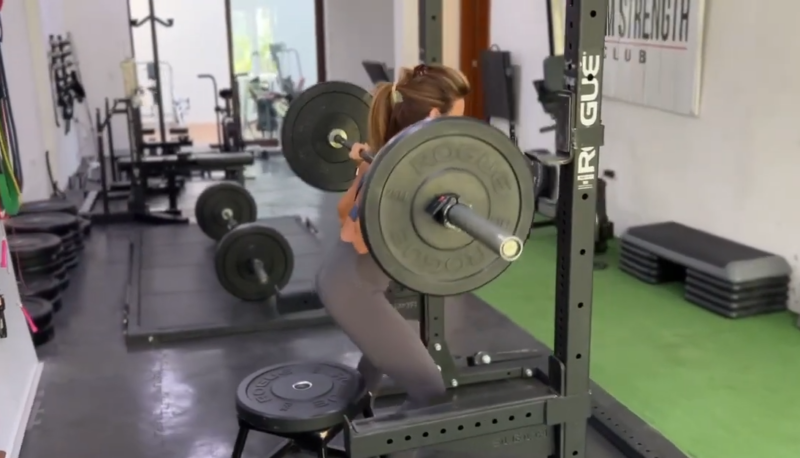
| Equipment | Description |
|---|---|
| Squat Rack | Safety first! Always use a squat rack, especially if you’re lifting heavy. |
| Barbell and Weights | Start light and gradually increase as you perfect your form. |
| Proper Footwear | Flat-soled shoes are ideal for maintaining stability. |
Step-by-Step Guide to the Perfect Form
To master the box squat, follow this detailed step-by-step guide that covers everything from setup to execution.
1. Set Up
2. Stance and Posture
3. Initiate the Descent
4. Controlled Descent
5. Touch and Pause
6. Ascent
7. Reset and Repeat
Common Mistakes and How to Fix Them
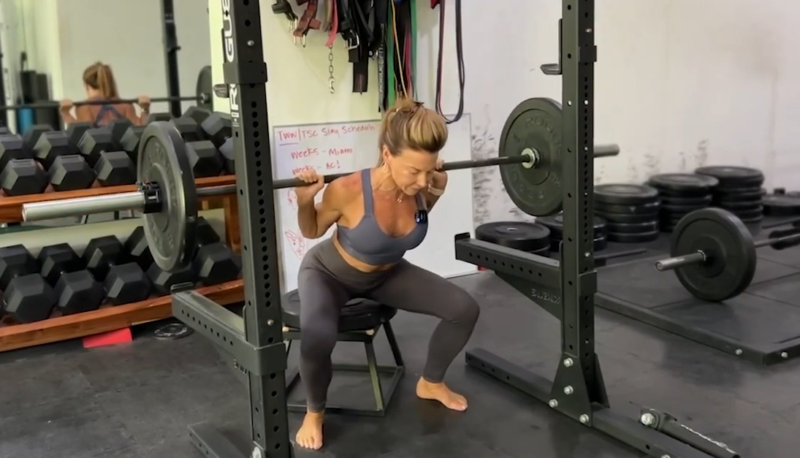
Bouncing Off the Box
Bouncing can lead to poor form and an increased risk of injury. To fix this, focus on a controlled descent and a brief pause on the box.
Knees Caving In
This often happens when your glutes and abductors are weak. Strengthen these muscles and focus on pushing your knees out during the movement.
Leaning Forward
Leaning too far forward puts unnecessary strain on your lower back. Keep your chest up and engage your core to maintain a neutral spine.
Not Sitting Back Enough
Failing to sit back can lead to a quad-dominant squat and knee pain. Visualize sitting back on a chair and practice the hip hinge movement.
The owner of Fitness Avenue advises, “Mastering box squats is simpler when you train inside a sturdy power rack for a home gym—it keeps the bar path consistent and lets you focus on form cues like sitting back and keeping your knees aligned.”
Progressions and Variations
Adjust Box Height
As you become more comfortable, experiment with different heights. A lower box increases the range of motion and challenges your flexibility and strength.
Pause the Squats
Extend the pause on the box to increase time under tension. This variation is great for building muscle endurance and control.
Explosive Box Squats
Focus on an explosive ascent to improve power and speed. This is especially useful for athletes looking to enhance their performance.
Box Squats with Bands or Chains
Adding resistance bands or chains can increase the difficulty and provide variable resistance, challenging your muscles throughout the lift.[/su_note]
- Always warm up with dynamic stretches and light sets of squats to prepare your muscles and joints.
- Start with box squats 1-2 times a week, gradually increasing frequency as your form and strength improve.
- For beginners, aim for 3-4 sets of 8-12 reps. Advanced lifters can vary the rep range depending on their goals, whether it’s strength, hypertrophy, or endurance.
- Finish with static stretches focusing on the lower body to aid recovery and flexibility.
Why Should You Try These?
In Summary
Related Posts:
- How to Perfect Your Sumo Squat Form - A Step-by-Step Guide
- How to Perfect Your Bent Over Lateral Raise Form
- Incline Hammer Curls 101 - Learn The Proper Form & Tricks
- Cajun Dip Dressing - How to Make the Perfect Sauce
- Gym Etiquette Guide - Graceful Tips for Staying…
- Zone 2 Cardio Guide for Endurance, Incredible…




